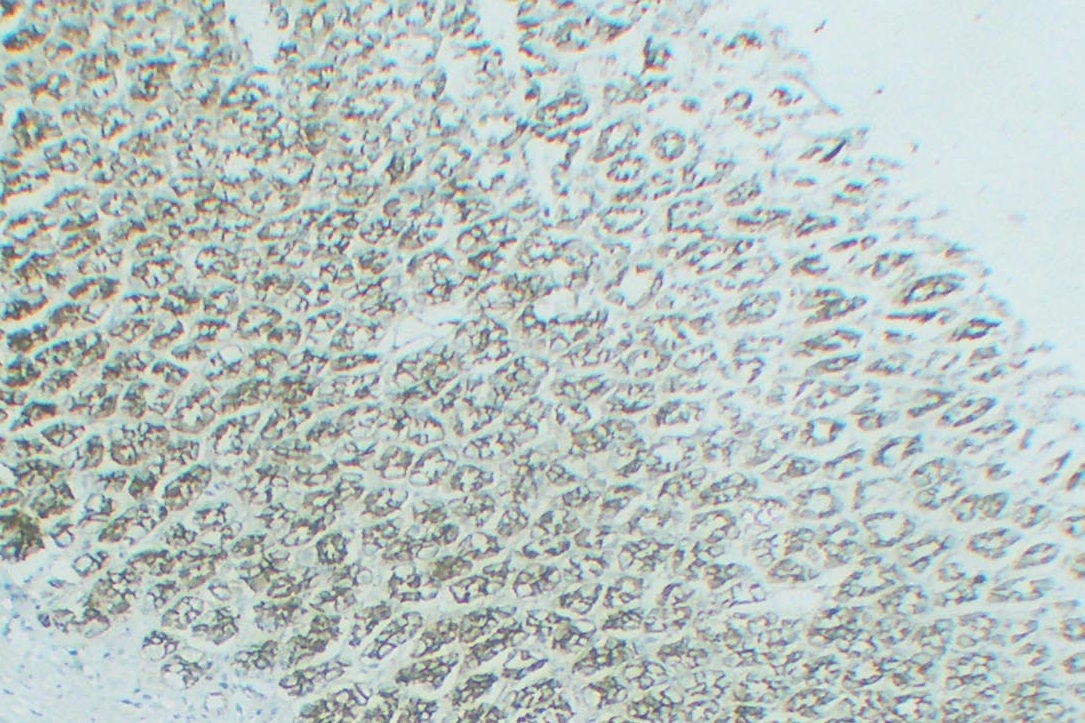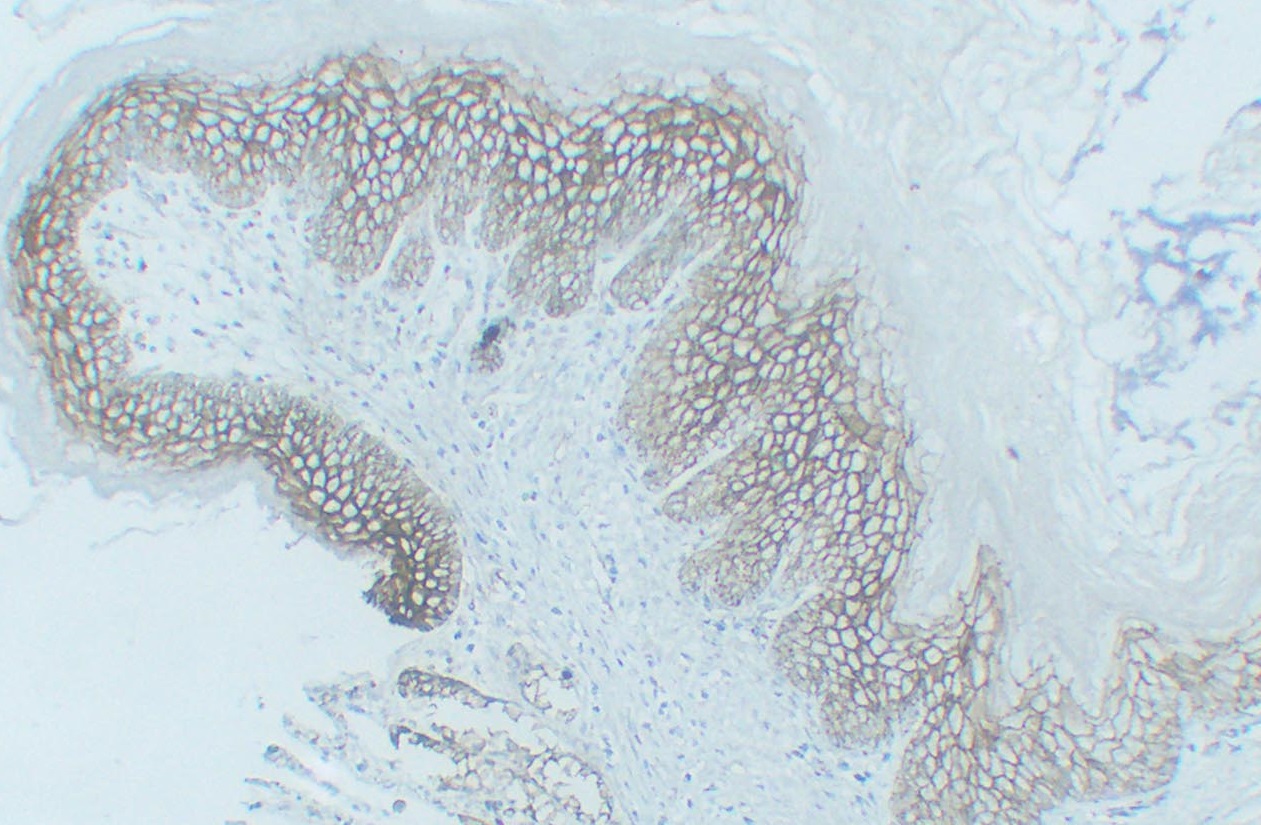Claudin 1 (ABT184R) rabbit mAb
- Catalog No.:YM8011
- Applications:WB;IHC;ELISA
- Reactivity:Human; Mouse; Rat;
- Target:
- Claudin 1
- Fields:
- >>Cell adhesion molecules;>>Tight junction;>>Leukocyte transendothelial migration;>>Pathogenic Escherichia coli infection;>>Hepatitis C
- Gene Name:
- CLDN1
- Protein Name:
- Claudin-1
- Human Gene Id:
- 9076
- Human Swiss Prot No:
- O95832
- Mouse Gene Id:
- 12737
- Mouse Swiss Prot No:
- O88551
- Rat Gene Id:
- 65129
- Rat Swiss Prot No:
- P56745
- Immunogen:
- Synthesized peptide derived from human protein. AA range:150-211
- Specificity:
- endogenous
- Formulation:
- PBS, 50% glycerol, 0.05% Proclin 300, 0.05%BSA
- Source:
- Monoclonal Rabbit IgG1, Kappa
- Dilution:
- IHC 1:100-500 WB 1:500-2000 ELISA: 1:20000
- Purification:
- Protein A
- Storage Stability:
- -15°C to -25°C/1 year(Do not lower than -25°C)
- Other Name:
- CLDN1;CLD1;SEMP1;Claudin-1;Senescence-associated epithelial membrane protein
- Molecular Weight(Da):
- 23kD
- Background:
- Tight junctions represent one mode of cell-to-cell adhesion in epithelial or endothelial cell sheets, forming continuous seals around cells and serving as a physical barrier to prevent solutes and water from passing freely through the paracellular space. These junctions are comprised of sets of continuous networking strands in the outwardly facing cytoplasmic leaflet, with complementary grooves in the inwardly facing extracytoplasmic leaflet. The protein encoded by this gene, a member of the claudin family, is an integral membrane protein and a component of tight junction strands. Loss of function mutations result in neonatal ichthyosis-sclerosing cholangitis syndrome. [provided by RefSeq, Jul 2008],
- Function:
- disease:Defects in CLDN1 are the cause of ichthyosis-sclerosing cholangitis neonatal syndrome (NISCH) [MIM:607626]; also called ichthyosis with leukocyte vacuoles alopecia and sclerosing cholangitis (ILVASC). NISCH is a rare autosomal recessive complex ichthyosis syndrome characterized by scalp hypotrichosis, scarring alopecia, vulgar type ichthyosis, and sclerosing cholangitis.,function:Plays a major role in tight junction-specific obliteration of the intercellular space, through calcium-independent cell-adhesion activity (By similarity). Acts as a co-receptor for HCV entry into hepatic cells.,similarity:Belongs to the claudin family.,subunit:Can form homo- and heteropolymers with other CLDN. Homopolymers interact with CLDN3, but not CLDN2, homopolymers. Directly interacts with TJP1/ZO-1, TJP2/ZO-2 and TJP3/ZO-3. Interacts with MPDZ and INADL (By similarity). May interact with HCV E1 an
- Subcellular Location:
- Membranous
- Expression:
- Strongly expressed in liver and kidney. Expressed in heart, brain, spleen, lung and testis.
- June 19-2018
- WESTERN IMMUNOBLOTTING PROTOCOL
- June 19-2018
- IMMUNOHISTOCHEMISTRY-PARAFFIN PROTOCOL
- June 19-2018
- IMMUNOFLUORESCENCE PROTOCOL
- September 08-2020
- FLOW-CYTOMEYRT-PROTOCOL
- May 20-2022
- Cell-Based ELISA│解您多样本WB检测之困扰
- July 13-2018
- CELL-BASED-ELISA-PROTOCOL-FOR-ACETYL-PROTEIN
- July 13-2018
- CELL-BASED-ELISA-PROTOCOL-FOR-PHOSPHO-PROTEIN
- July 13-2018
- Antibody-FAQs
- Products Images

- Rat stomach tissue was stained with Anti-Claudin 1 (ABT184R) rabbit Antibody

- Rat esophagus tissue was stained with Anti-Claudin 1 (ABT184R) rabbit Antibody



